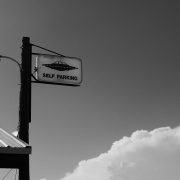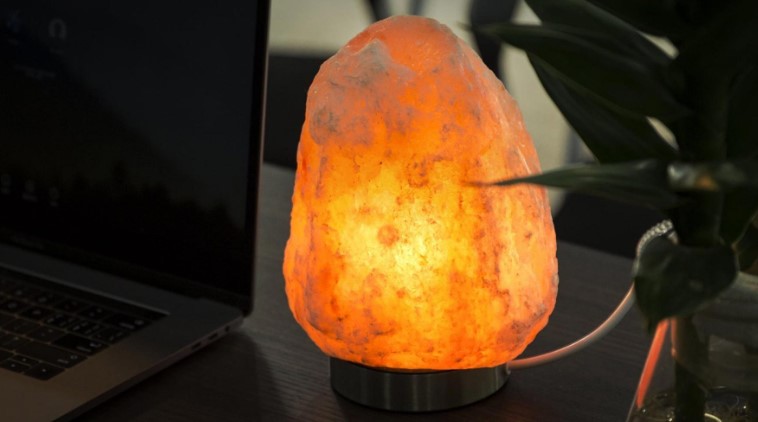Are you curious about the strange and fascinating world of phobias? In this article, we will delve into the realm of uncommon fears and intriguing phobias that have a unique impact on individuals. From the fear of beards to the fear of cheese, these unusual phobias provide a glimpse into the complex workings of the human mind.
Phobias are more than just irrational fears; they can cause significant distress and anxiety in those who experience them. While some phobias may seem bizarre or even humorous to outsiders, they are very real and can have a profound effect on a person’s daily life.
Join us as we explore the depths of these uncommon phobias and uncover the reasons behind their existence. From the fear of knees to the fear of peanut butter sticking to the roof of the mouth, each phobia has its own unique story to tell. So, let’s embark on this journey together and discover the intriguing world of unusual phobias.
Pogonophobia
Pogonophobia
Pogonophobia is a fascinating phobia that revolves around the fear of beards. While it may seem unusual to some, individuals who suffer from this phobia experience genuine anxiety and discomfort in the presence of facial hair. The fear can range from mild unease to intense panic attacks, making it a significant challenge for those affected.
There are various reasons why some individuals develop pogonophobia. One possible cause is a traumatic experience related to beards, such as a negative encounter with someone who had a beard. Additionally, societal influences and cultural perceptions of facial hair can also play a role in the development of this phobia.
It’s important to note that pogonophobia can significantly impact the daily lives of those who have it. Simple activities such as going to a barber shop or encountering someone with a beard can trigger intense fear and avoidance behaviors. Understanding and empathy are crucial in supporting individuals with pogonophobia and helping them navigate their fears.
Turophobia
Turophobia is a unique and intriguing phobia that involves an intense fear of cheese. While it may seem unusual to be afraid of a food item that is enjoyed by many, individuals with turophobia experience anxiety and discomfort when faced with cheese. The specific causes behind this phobia can vary from person to person, but there are a few potential factors that may contribute to the development of turophobia.
One possible cause of turophobia is a traumatic experience or negative association with cheese. This could be due to a past incident involving cheese, such as a choking incident or a bad reaction to eating cheese. These negative experiences can create a lasting fear and aversion towards cheese.
Another possible cause of turophobia is cultural influence. In some cultures, cheese may be considered unclean or taboo, leading to a fear or aversion towards it. Cultural beliefs and upbringing can play a significant role in shaping an individual’s fears and phobias.
It is important to note that turophobia, like other phobias, can vary in severity. Some individuals may only experience mild discomfort or anxiety around cheese, while others may have a more intense and debilitating fear. If turophobia or any other phobia significantly impacts an individual’s daily life, it is advisable to seek professional help and support to address and manage the fear.
Caseiphobia
Caseiphobia is a specific phobia that involves an intense fear of melted cheese. Individuals with this phobia may experience anxiety, panic attacks, or even avoid situations where melted cheese is present. The fear may stem from various psychological factors, such as a traumatic experience involving melted cheese or a learned association between melted cheese and negative emotions.
One possible explanation for caseiphobia is a condition known as selective eating disorder or avoidant/restrictive food intake disorder (ARFID). In this disorder, individuals have a restricted range of food preferences and may experience intense fear or disgust towards certain textures or smells, including melted cheese. This fear can be debilitating and impact their daily lives, making it difficult for them to enjoy meals or socialize in settings where melted cheese is commonly served.
Psychological therapy, such as cognitive-behavioral therapy (CBT), can be effective in treating caseiphobia. By working with a therapist, individuals can learn to challenge and modify their irrational thoughts and beliefs about melted cheese. Gradual exposure to melted cheese in a controlled and supportive environment can also help desensitize individuals to their fear and reduce anxiety.
Formaggiofobia
Formaggiofobia:
Formaggiofobia is a rare phobia that involves a fear of specific types of cheese. Individuals with this phobia experience intense anxiety and discomfort when they encounter certain varieties of cheese. The specific types of cheese that trigger this fear can vary from person to person, but it is often linked to the texture, smell, or taste of the cheese.
This unusual phobia may have cultural influences that play a role in its development. Different cultures have unique relationships with cheese, and certain types of cheese may hold specific cultural significance. This cultural context can contribute to the fear and anxiety experienced by individuals with Formaggiofobia.
It is important to note that Formaggiofobia is a specific phobia and should not be confused with a general fear of cheese, which is known as Caseusphobia. While Caseusphobia encompasses a fear of all types of cheese, Formaggiofobia focuses on specific varieties. The distinction between the two phobias highlights the unique nature of Formaggiofobia and the specific triggers that individuals with this phobia may encounter.
Caseusphobia
Caseusphobia:
Caseusphobia, also known as the fear of cheese, is an unusual phobia that can have a significant impact on individuals’ daily lives. Those who suffer from this fear experience intense anxiety and discomfort when they are in the presence of cheese or even think about it. The fear of cheese in general can manifest in various ways, including avoiding social gatherings or restaurants where cheese is likely to be served.
This phobia can greatly restrict individuals’ dietary choices and social interactions. They may have to carefully examine food labels to ensure that they do not inadvertently consume any cheese. Even the sight or smell of cheese can trigger a panic response, leading to feelings of anxiety and distress. The fear of cheese can also lead to isolation and a sense of embarrassment, as it is not a commonly understood phobia.
Living with caseusphobia can be challenging, as cheese is a staple ingredient in many cuisines and is often a central component of meals and snacks. Individuals with this phobia may have to navigate their daily lives with caution, constantly being aware of the presence of cheese and taking steps to avoid it. Seeking therapy and support can be beneficial for those struggling with caseusphobia, as it can help them develop coping mechanisms and gradually overcome their fear.
Arachibutyrophobia
Arachibutyrophobia is an unusual phobia that involves the fear of peanut butter sticking to the roof of the mouth. While it may seem like a strange fear, individuals with this phobia can experience significant anxiety and discomfort when faced with peanut butter. The fear can be triggered by the texture and stickiness of peanut butter, which can create a sensation of being trapped or suffocated.
The origins of arachibutyrophobia are not entirely clear, but it is believed to stem from a combination of psychological and sensory factors. Some individuals may have had a traumatic experience involving peanut butter in their past, such as choking or gagging, which has led to the development of this phobia. Others may have a heightened sensitivity to certain textures or sensations, making the stickiness of peanut butter particularly distressing.
Living with arachibutyrophobia can be challenging, as peanut butter is a common ingredient in many foods and snacks. Individuals with this phobia may avoid certain foods or experience anxiety in social situations where peanut butter is present. Treatment options for arachibutyrophobia may include cognitive-behavioral therapy (CBT), exposure therapy, and relaxation techniques to help individuals manage their fear and reduce anxiety.
Genuphobia
Genuphobia is an unusual and intriguing phobia that involves an intense fear of knees. While it may seem strange to fear such a common body part, individuals with genuphobia experience significant anxiety and discomfort when confronted with knees, whether it’s their own or someone else’s.
There are several possible psychological reasons behind genuphobia. One theory suggests that traumatic experiences involving knees, such as injuries or accidents, can trigger the development of this phobia. Another possibility is that genuphobia may stem from a deep-seated fear of vulnerability or weakness, as knees are seen as a vulnerable part of the body.
Those with genuphobia may go to great lengths to avoid situations where they may encounter knees, such as avoiding crowded places or wearing clothing that covers the knees. This fear can have a significant impact on their daily lives, limiting their activities and interactions with others.
To better understand genuphobia, let’s explore some of its specific manifestations:
- Gonalgiafobia: This is a subcategory of genuphobia that specifically involves the fear of knee pain. Individuals with this phobia may avoid activities that could potentially cause knee pain, such as exercise or physical exertion.
- Patellaphobia: This particular manifestation of genuphobia focuses on the fear of the kneecap. Individuals with patellaphobia may experience extreme anxiety when their kneecap is touched or manipulated in any way.
Overall, genuphobia is a fascinating and lesser-known phobia that can greatly impact the lives of those who experience it. By understanding the possible psychological reasons behind this fear, we can gain insight into the complex nature of phobias and the unique ways they affect individuals.
Gonalgiafobia
Gonalgiafobia is a specific phobia characterized by an intense and irrational fear of knee pain. Individuals with this phobia may experience extreme anxiety and distress when faced with situations that could potentially cause knee pain or injury. This fear can be debilitating and can significantly impact a person’s daily life and activities.
The development of gonalgiafobia can be influenced by various experiences and factors. Traumatic events, such as a severe knee injury or witnessing someone else experience knee pain, can contribute to the development of this phobia. Additionally, individuals who have a history of chronic knee pain or have undergone knee surgeries may also be more prone to developing gonalgiafobia.
People with gonalgiafobia may go to great lengths to avoid situations that could potentially cause knee pain. They may avoid activities that involve physical exertion or movements that put strain on the knees. This fear can also lead to social isolation and a decreased quality of life.
It is important for individuals with gonalgiafobia to seek professional help to manage their fear and anxiety. Cognitive-behavioral therapy (CBT) and exposure therapy are commonly used treatment approaches that can help individuals confront and overcome their fear of knee pain. Through therapy, individuals can learn coping mechanisms and strategies to gradually reduce their anxiety and regain control over their lives.
Patellaphobia
Patellaphobia is a specific phobia that involves an intense fear of the kneecap. Individuals with this phobia may experience anxiety, panic attacks, or extreme discomfort when they come into contact with or even think about their own or others’ kneecaps. This fear can have a significant impact on their daily activities and interactions, as they may avoid situations or activities that involve exposing or touching the kneecap.
People with patellaphobia may find it challenging to participate in sports or physical activities that require bending or flexing the knee. They may also avoid situations where they might see or touch someone’s kneecap, such as going to the beach or swimming pool. This fear can lead to social isolation and difficulties in forming relationships, as individuals may feel embarrassed or anxious about their phobia.
It is important to note that phobias are irrational fears, and individuals with patellaphobia may recognize that their fear is excessive or unreasonable. However, this does not diminish the impact it can have on their daily lives. Treatment options for patellaphobia may include therapy, such as cognitive-behavioral therapy (CBT), exposure therapy, or medication to manage anxiety symptoms.
Pogonophobia
Discover the fear of beards and why some individuals experience anxiety and discomfort around facial hair.
Pogonophobia is an intriguing phobia that affects a small but significant number of individuals. It is characterized by an intense fear or aversion towards beards. For those who suffer from this phobia, the sight of a beard can trigger feelings of anxiety, discomfort, and even panic. This fear can be so overwhelming that it may interfere with their daily lives and social interactions.
The exact cause of pogonophobia is not fully understood, but there are several theories that attempt to explain its origins. Some experts believe that it may stem from a traumatic experience or a negative association with beards. Others suggest that it could be a result of societal or cultural influences, where certain stereotypes or perceptions about bearded individuals contribute to the development of this fear.
It is important to note that pogonophobia is a genuine phobia and should not be dismissed or trivialized. Individuals who suffer from this fear may experience a range of symptoms, including rapid heartbeat, shortness of breath, sweating, and even a sense of impending doom. Seeking professional help and support is crucial for those who struggle with pogonophobia, as it can greatly improve their quality of life and help them overcome their fear.
Frequently Asked Questions
- What is pogonophobia?
Pogonophobia is the fear of beards. Individuals with this phobia may experience anxiety and discomfort around facial hair.
- What is turophobia?
Turophobia is the fear of cheese. It is an unusual phobia that can cause distress and anxiety in those affected.
- What is caseiphobia?
Caseiphobia specifically refers to the fear of melted cheese. This fear may stem from psychological factors and can impact individuals’ daily lives.
- What is formaggiofobia?
Formaggiofobia is a rare phobia characterized by the fear of specific types of cheese. Cultural influences may play a role in the development of this phobia.
- What is caseusphobia?
Caseusphobia is the general fear of cheese. It can affect individuals in various aspects of their daily activities and interactions.
- What is arachibutyrophobia?
Arachibutyrophobia is the fear of peanut butter sticking to the roof of the mouth. The origins of this phobia are not fully understood, but it can cause distress in those with the fear.
- What is genuphobia?
Genuphobia is the fear of knees. It is an uncommon phobia that may have psychological reasons behind its development.
- What is gonalgiafobia?
Gonalgiafobia refers to the fear of knee pain. Experiences related to knee pain may contribute to the development of this specific phobia.
- What is patellaphobia?
Patellaphobia is the fear of the kneecap. It can impact individuals’ daily activities and interactions, causing distress and avoidance behaviors.









